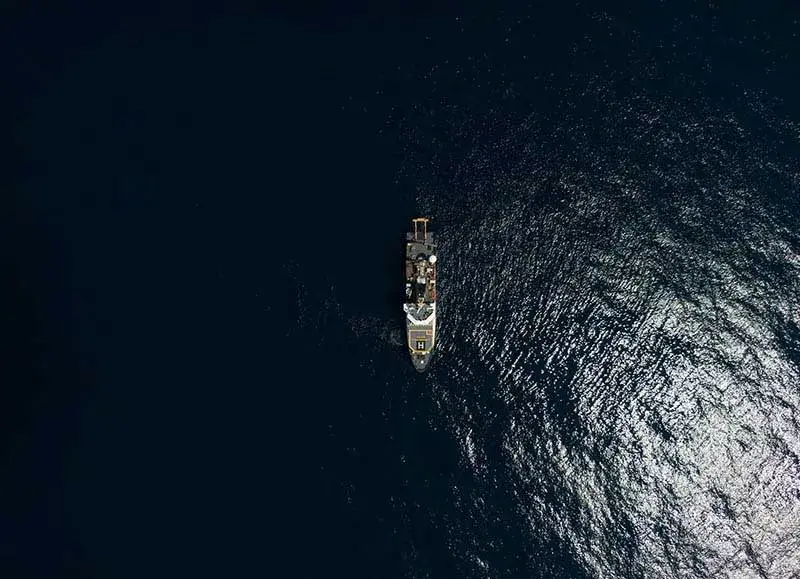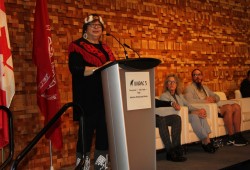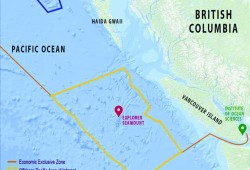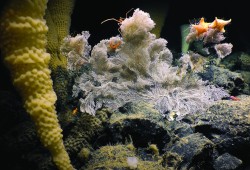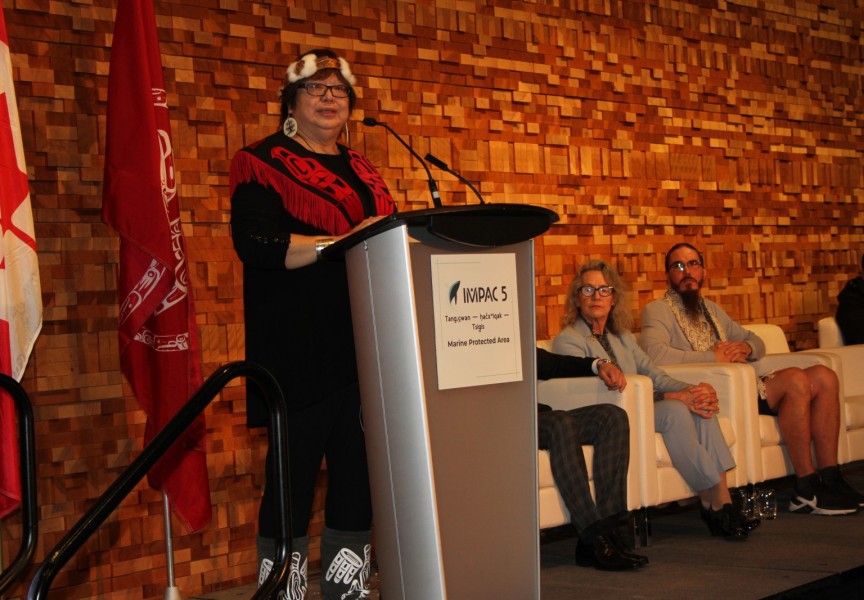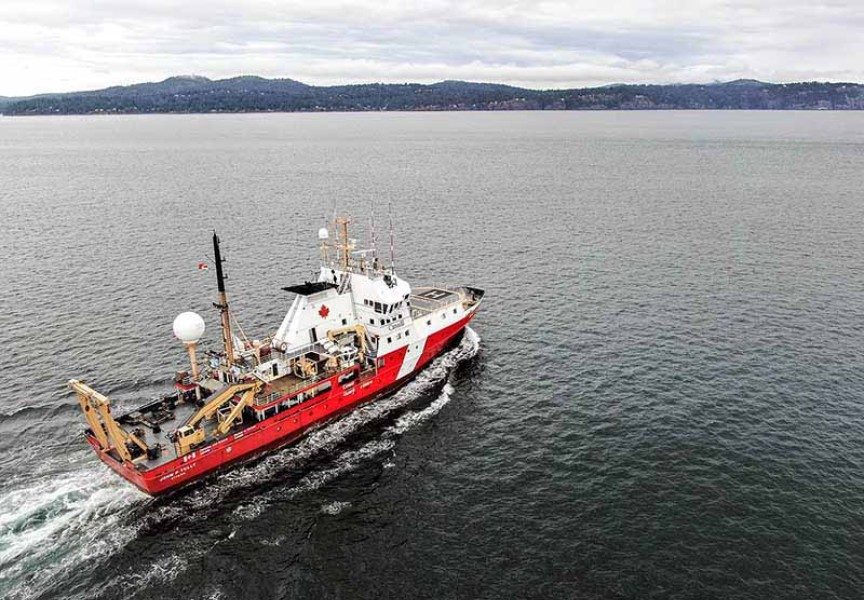A unique ocean area four times the size of Vancouver Island has gained official protection from petroleum exploration, deep-sea mining and bottom trawl fishing.
Located about 150 kilometres west of Vancouver Island and off the southern tip of Haida Gwaii, the Tang.ɢwan-ḥačxʷiqak-Tsig̱is Marine Protected Area (MPA) is home to extraordinary seafloor features, including more than 47 underwater mountains, known as seamounts, and all confirmed hydrothermal vents in Canada. It is now the largest MPA designated under Canada’s Oceans Act.
“The Nuu-chah-nulth Tribal Council (NTC) is very pleased that the MPA off the coast of Vancouver Island within our territories has been officially created,” NTC President Cloy-e-iis, Judith Sayers, told the Ha-Shilth-Sa. “We have always taken care of our oceans which are critical to our way of life, and this is a formality to working with Haida, Pacheedaht and Quatsino and DFO to manage this area that is rich with hydrothermal vents, seamounts and unique habitat for many species that we have an Aboriginal right to.”
“Because it is such a big area, it was important to work with Haida, Quatsino and Pacheedaht in naming it so we can work together in managing it as much as we can and protect what we can,” she continued.
The name consists of a Haida word meaning deep ocean (Tang.ɢwan: phonetic spelling: Tung-Gwun), a Nuu-chah-nulth word meaning deepest part of the ocean (ḥačxʷiqak; phonetic spelling:huch/khwi/kuk) and a Quatsino word referring to a monster of the deep (Tsig̱is; phonetic spelling: tsee-geese).
Formerly known as the Offshore Pacific Area of Interest, this deep-water ocean area was first identified for protection in May 2017. Measures to prevent certain fishing activities were subsequently put in place, reads a July 11 media release from the Government of Canada. In 2023, the Council of the Haida Nation, the NTC, Quatsino First Nation, Pacheedaht First Nation and Canada signed a Memorandum of Understanding outlining how the parties will collaboratively manage the Tang.ɢwan-ḥačxʷiqak-Tsig̱is MPA.
In the media release, Diane Lebouthillier, minister of Fisheries, Ocean and the Canadian Coast Guard, said the designation is a giant step toward protecting Canada’s oceans.
“Working collaboratively with partner First Nations to co-operatively manage and designate the Tang.ɢwan-ḥačxʷiqak-Tsig̱is MPA signifies our joint commitment to preserve ecologically and culturally important marine and coastal areas. The designation of this MPA brings us halfway to our goal of conserving 30 per cent of our oceans by 2030,” Lebouthillier wrote.
“With so many threats to our oceans such as climate change and pollution, we must be vigilant in what we allow to happen in our waters,” reiterated Sayers. “Joint management is key to reconciliation and living up to UNDRIP (United Nations Declaration on the Rights of Indigenous Peoples Act). Using our ecological knowledge is essential to the future of our oceans.”
The announcement was celebrated amongst environmental groups and research networks across the country.
“This MPA will safeguard rare deep-sea ecosystems that are home to species that get their energy not from the sun, like most life on Earth, but from chemicals released underwater vents,” said Carlo Acuña, senior conservation campaigner for the Ocean Program at the Canadian Parks And Wilderness Society - British Columbia (CPAWS-BC), in a media release. “We all can now be proud to say that this incredible and important area is permanently protected.”
Ocean Networks Canada (ONC), a University of Victoria initiative, has been providing ocean monitoring of the MPA through its deep-sea cabled observatory NEPTUNE (North-East Pacific Time-series Undersea Networked Experiments) since 2009.
"ONC has been delighted to work together with Fisheries and Oceans Canada, British Columbia coastal First Nations and other partners to explore and uncover the rich and biodiverse ocean offshore our west coast,” stated ONC president and CEO Kate Moran in a news release. “This work helped set the stage for delineating Canada’s newest protected area — Tang.ɢwan-ḥačxʷiqak-Tsig̱is — which is a key part of ensuring that future generations will inherit a healthy ocean and thriving coastal communities.”
Co-management efforts, scientific research and enforcement is expected to cost $3.5 million in federal funds over the next decade to protect Tang.ɢwan-ḥačxʷiqak-Tsig̱is MPA. Contravention of these new regulations, published in Canada Gazette Part II, Volume 158, Number 13, can bring up to $8 million in fines, or even more if an offence brings a criminal conviction.

